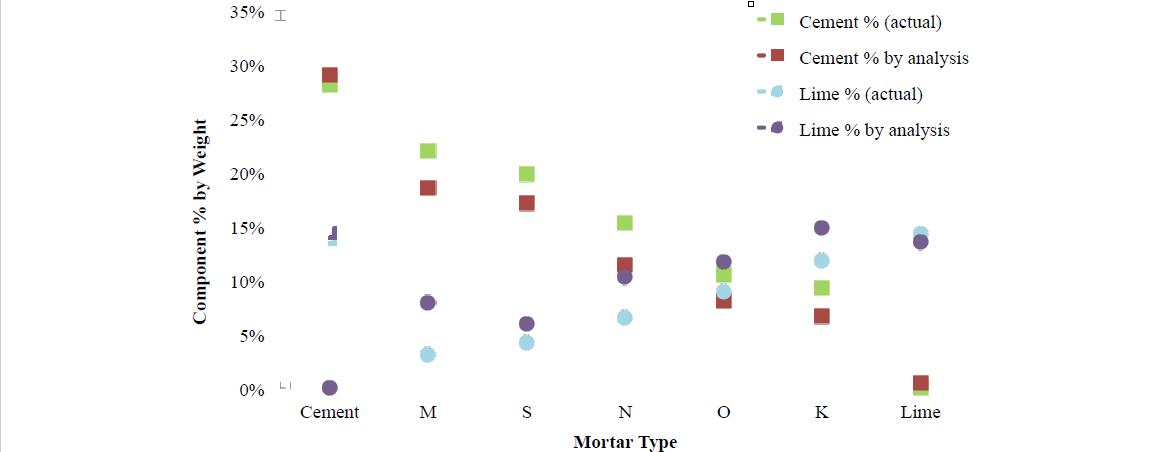Atkinson-Noland & Associates, Inc., Boulder, CO 80302, USA
1ageister@ana-usa.com, 2dharvey@ana-usa.com, 3swo@ana-usa.com
ABSTRACT
Determination of the chemical composition of hardened masonry mortars is a common challenge presented to material laboratories. Often the existing mortar formulation is desired in order to determine an appropriate mortar composition for conservation work. The use of portland cement in both historic and modern mortars can complicate the determination of mortar binder components in the laboratory. Although an ASTM standard for mortar analysis exists (ASTM C1324) [1], this standard involves the use of dangerous chemicals and can be expensive to perform.
This paper describes alternative mortar chemical analysis methods, including a literature review of historic and modern mortar analysis methods. The results of a limited survey of United States laboratories describe the current state of practice for mortar chemical analysis. Both the availability and cost of various methods are evaluated. A comparison of various methods for analysis of hardened mortar samples is provided. Methods included are the ASTM C1324 method, historical methods introduced by Cliver [2] and Jedrzejewska [3], and a modern method introduced by Middendorf [4]. Mortar samples were prepared in the laboratory with known proportions of sand, portland cement, and lime, and tested using one of the described methods. Our conclusions regarding the most appropriate test methods to determine hardened mortar chemical composition for the purposes of conservation are provided.
KEYWORDS: mortar analysis, portland cement, lime, aggregate, chemical characterization, test methods
229.pdf



